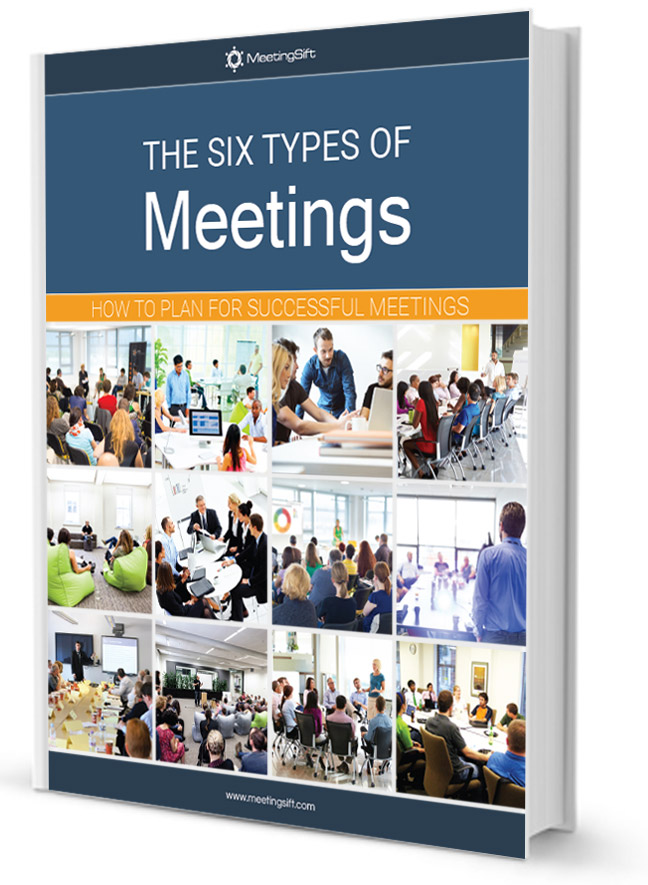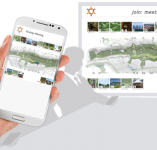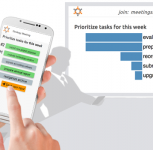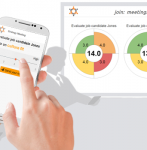The vast majority of business decisions are made in meetings. While small decisions are made in all kinds of meetings, the more important decisions often get their own dedicated meetings.
 There are different types of group decision making processes, and care should be taken to choose a process that best matches the situation. A decision making process can include group activities like information gathering and sharing, brainstorming solutions, evaluating options, ranking preferences, and voting on the final options. Below are the most effective ways of running decision making meetings.
There are different types of group decision making processes, and care should be taken to choose a process that best matches the situation. A decision making process can include group activities like information gathering and sharing, brainstorming solutions, evaluating options, ranking preferences, and voting on the final options. Below are the most effective ways of running decision making meetings.
Primary Goals for Decision Making Meetings
Goals for a decision-oriented meeting can vary a little based on the type of decision being made, but they are always centered on coming to a consensus about a future plan. It is important to remember that the goal of these meetings also includes planning how to best execute the decision that has been made.
Make the best possible decision
By involving a group in making a decision you can rely on collective intelligence; knowledge beyond what is possible with individual decision makers. Because each participant has unique information and perspectives, combining group information leads to more informed decisions. However, it is important to use meetings designed specifically for group decisions efficiently, to not waste the group members’ time.
If all planning decisions were made by one person, not only would the choices be uninformed, there would also be little unity around team goals and direction.
Planning for execution
When individuals feel that their opinion has been considered in the group planning, they are more likely to embrace the decisions and work to carry out those goals.
Participatory decision making leads to increased team productivity and likelihood of goal execution, because team members feel ownership and responsibility for the decisions made.
Addressing both short term and long term goals at your decision making meetings is a great way to make sure team members leave with a direction and know the next steps. The short term plan can be as simple as outlining action items and assigning tasks. In the long term it could mean setting a timeline of general dates and milestones. Initial planning can be an effective way of aligning the group and cementing the decision that was made.
Key Roles in Decision Making Meetings
The participants in decision making meetings may play different roles. Understanding the distinctions between these levels of involvement is a useful way of holding members accountable for their role in implementing decisions.
Meeting leader
In order to avoid getting off topic it is recommended that one person be in charge of guiding the direction of team negotiation. In addition, it can be helpful to use some elements of status update meetings in order to have meeting attendees present and be held accountable for research into the decision being made.
Those with authority to carry out the decisions
For decision making meetings it is particularly important to include all relevant persons with authority to carry out the decision. If decisions are made without including the relevant people, it can often be very challenging to implement the resulting decision.
 In some cases, it can be useful to dedicate one leader of a team to be a representative for that group. Often, this job is given to someone in a senior position, but it can be fulfilled by anyone capable of accurately reporting information on behalf of a group. If this method is used, the representative should be prepared to report back to the team the consensus that was reached. Without this information exchange, the group unity that should have been a result of the group meeting is lost.
In some cases, it can be useful to dedicate one leader of a team to be a representative for that group. Often, this job is given to someone in a senior position, but it can be fulfilled by anyone capable of accurately reporting information on behalf of a group. If this method is used, the representative should be prepared to report back to the team the consensus that was reached. Without this information exchange, the group unity that should have been a result of the group meeting is lost.
Note taker and process observer
Decision making meetings can often get derailed or become ineffective for a variety of reasons. To counter this, it can be helpful to include a note taker and process observer. These roles should be filled by people not directly involved in the decision so they are not biased toward any particular opinion. A note taker records what was suggested and decided throughout the meeting while a process observer records how those decisions were met. Incorporating these roles can lead to a lasting group understanding as well as ability to improve decision making meetings in the future.
Common Challenges in Decision Making Meetings
Making group decisions can be hard. Making good group decisions is even more challenging. However, good decisions is what can make or break your project or even your company or career. Being aware of the most common challenges in decision making meetings will move you closer to facilitating successful group decision making.
Incomplete information and narrow perspectives
An important aspect of collective decision making is to incorporate a broad spectrum of opinions and ideas, and through group collaboration converge these into a best possible solution. This process is easier said than done. Getting to a solution often involves dealing with a lot of conflicting agendas and opinions which are not easily resolved.
Identifying the best possible solutions
Another classic challenge of the decision making meeting is knowing what possible options are worth further consideration and discussion, and which options to discard early. Time is often wasted discussing possibilities that are not even among the most likely or best choices.
How to Host a Successful Decision Making Meeting
A great decision making meeting effectively incorporates all participants, benefiting from the knowledge and experience they bring to the process. Giving all relevant parties the opportunity to participate in the decision making process increases the quality of the decision, adds to the collective understanding and support of the outcome, and ensures successful implementation.
Consider all relevant information
We want as much relevant information as possible to go into the group decision process. This means involving as many stakeholders as practically possible to provide input when it comes to defining the problem area, come up with possible solutions, and evaluate options.
Generate and evaluate possible solutions
Identify and agree on solution requirements before starting to brainstorm potential solutions. Then, invite to brainstorm solutions with an open mind, focusing on the issue rather than the person presenting the idea. Use the solution requirements to evaluate the various suggestions, identifying the top ideas for further consideration.
Get everyone on board
One of the most important aspects of decision meetings is to create unity around the decision that is created. When each participant feels their opinion has been fully considered as part of the decision making process they are more likely to feel ownership of the decision, even in cases when it is not the outcome they hoped for.
Better Decision Making Meetings with Technology
Collaborative technologies like MeetingSift make group decision processes easier to manage, more efficient, produce better solutions, and improve execution of decisions.
Easily include and engage all key stakeholders for more complete information
Using smart device-based participation levels the playing field and provides an efficient way to share information and reach group consensus. The unruly nature of decision making meetings is easily structured with MeetingSift because participants are presented with real-time visualizations of group opinions as the discussion moves forward.
Quickly tap into the group’s knowledge and expertise
Having participants use MeetingSift to evaluate options will help focus on the task at hand. Collecting decision preferences automatically, rather than manually, speeds up the process. Not only does that mean less time spent on interpreting where a group stands but it also allows for more people to be involved in the process at the same time.
For example, conducting a brainstorm with a large group of participants using whiteboards, flip charts, and post it notes can get messy. When people are contributing one by one it takes a considerable amount of time. The MeetingSift brainstorm activity lets group members submit ideas concurrently, via their own smart devices, making sure to accurately record and organize all inputs. This saves time for everyone involved, no matter how large the group is
Real-time visualizations of options and opinions focuses the discussion
MeetingSift is well suited to measure group opinions. In the case of an extended discussion it can be helpful to take multiple snapshots of opinions, as they can change over the course of the conversation. Taking a quick group poll, ranking, or evaluation after an initial brainstorm will clearly identify where the group feels their time is best spent. This allows the discussion to stay centered on the most important and relevant issues. The group will be able to use these baseline opinions as a jumping off point for focused conversation, establishing a common ground and sense of unity which will set the stage for successfully reaching a decision.
Engaged inclusion of stakeholders generates buy-in and better execution
Unfortunately, just organizing a group decision making meeting does not necessarily assure that each person in the room will leave feeling that they have been heard. MeetingSift ensures each person gets to contribute on an even scale. Because MeetingSift displays group output in real-time, participants can literally watch their vote be factored into the results. Playing an active part in the decision making process generates a sense of ownership and responsibility for the results, which in turn ensures active participation in carrying out the plan.























